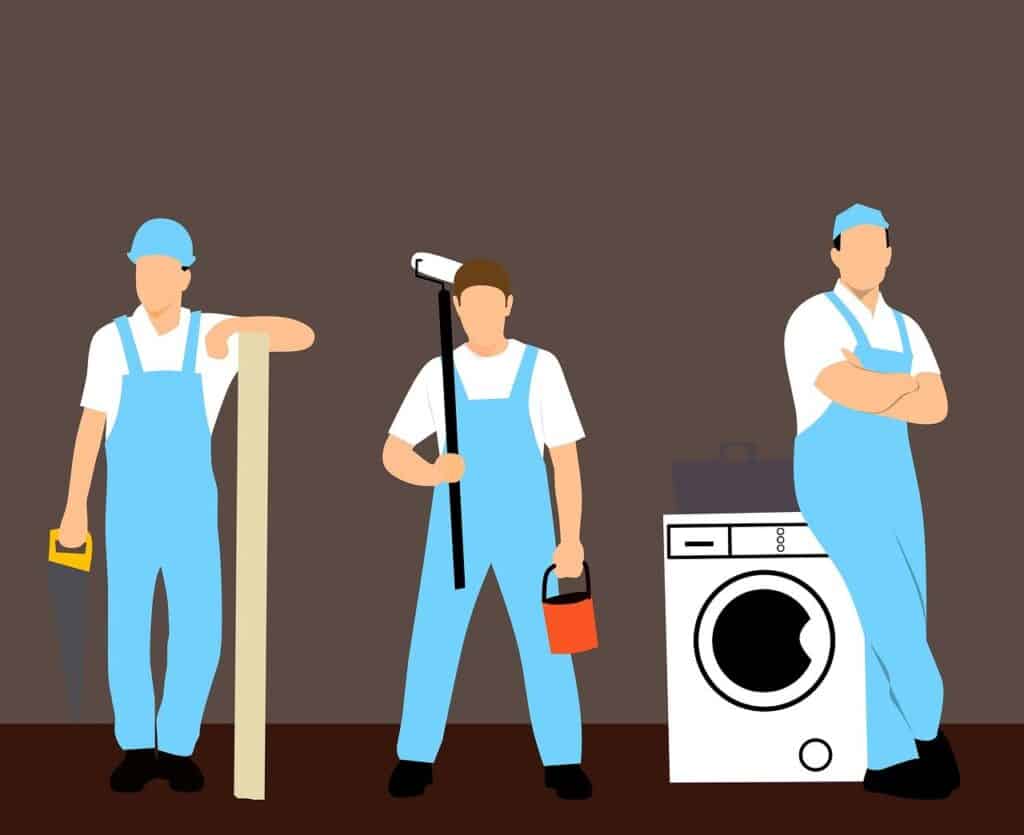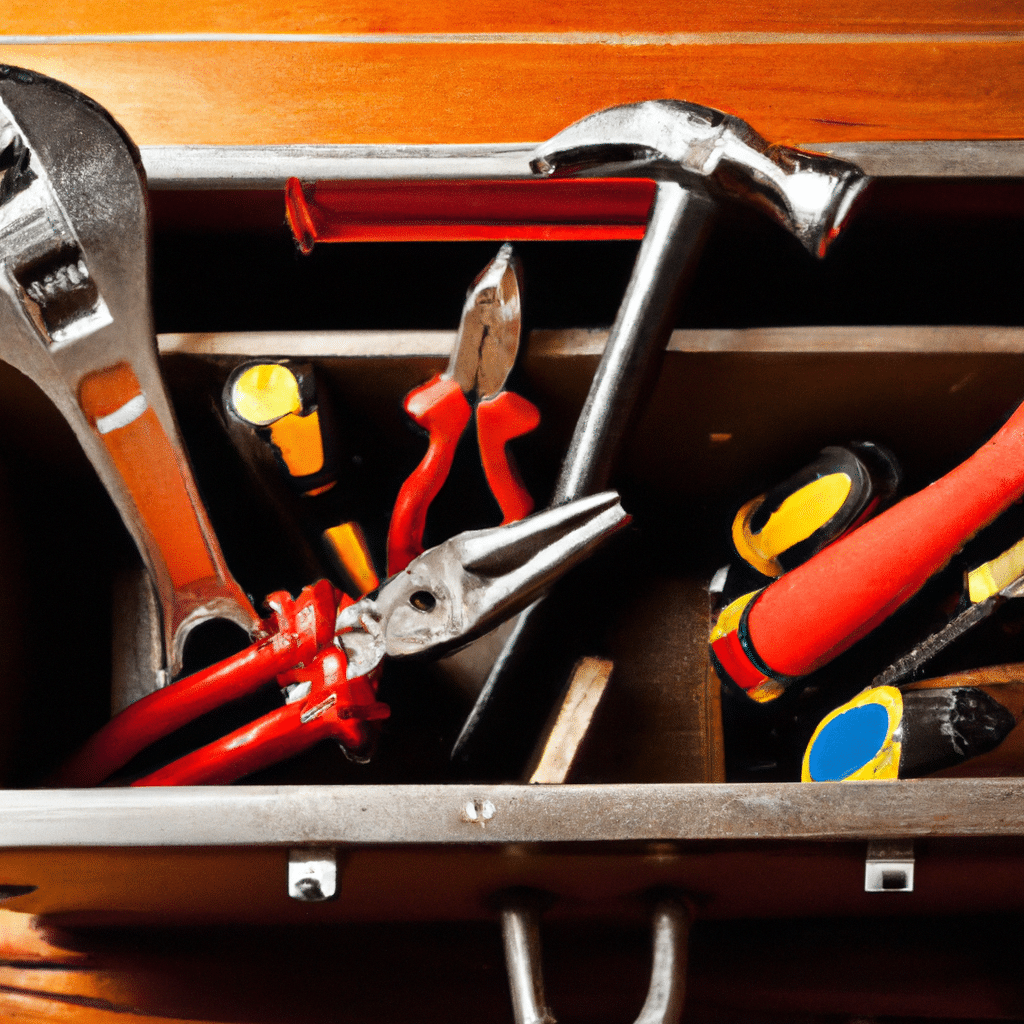If you’re a homeowner in Warren, Michigan in need of top-notch home repair and renovation services, look no further. We proudly present to you the Best Home Repair and Renovation company in Warren. With our expert team of skilled professionals and years of experience under our belt, we have earned a reputation for delivering exceptional results. Whether it’s fixing a leaky roof, remodeling your kitchen, or giving your bathroom a makeover, we’ve got you covered. Trust us to transform your house into the home of your dreams.

1. Bathroom Renovation
1.1. Upgrading fixtures and fittings
When it comes to bathroom renovation, one of the first things you should consider is upgrading the fixtures and fittings. This includes replacing old faucets, showerheads, and toilet fixtures with new, more modern options. Not only will this improve the overall aesthetic of your bathroom, but it can also enhance functionality and water efficiency. Look for fixtures that are not only stylish but also durable and easy to clean.
1.2. Installing new tiles and flooring
Another important aspect of bathroom renovation is installing new tiles and flooring. This can completely transform the look and feel of your bathroom. Choose tiles that are not only water-resistant but also easy to clean and maintain. Consider incorporating different textures and patterns to add visual interest to the space. In terms of flooring, options like porcelain or ceramic tiles, vinyl, or even natural stone can be excellent choices for durability and aesthetics.
1.3. Adding a new bathtub or shower
If your current bathtub or shower is outdated or worn out, consider adding a new one during your bathroom renovation. The right bathtub or shower can create a luxurious and relaxing environment in your bathroom. Whether you prefer a soaking tub, a walk-in shower, or a combination of both, there are many options available to suit your preferences and space constraints. Don’t forget to select high-quality materials and fixtures for long-lasting durability.
2. Kitchen Remodeling
2.1. Upgrading appliances and fixtures
When it comes to kitchen remodeling, upgrading appliances and fixtures can greatly enhance both the functionality and aesthetics of your kitchen. Consider replacing old, inefficient appliances with new, energy-efficient models. This can help you save on energy costs in the long run. Additionally, updating fixtures such as faucets, sinks, and cabinet hardware can give your kitchen a fresh and modern look.
2.2. Installing new countertops and backsplash
The countertops and backsplash are focal points in any kitchen. Upgrading to new countertops made from materials like granite, quartz, or even butcher block can greatly improve the visual appeal and functionality of your kitchen. Consider factors like durability, maintenance, and aesthetics when selecting your new countertops. Installing a new backsplash made from materials like subway tiles, mosaic tiles, or natural stone can also add a touch of elegance and personality to your kitchen.
2.3. Adding a kitchen island or breakfast bar
If you have the space, adding a kitchen island or breakfast bar can provide additional storage and countertop space, as well as create a gathering area for friends and family. A kitchen island can serve as a versatile workspace and can also incorporate features like a wine rack or additional seating. Similarly, a breakfast bar can be a convenient spot for quick meals or a place for kids to do their homework while you prepare dinner.
2.4. Refacing or replacing cabinets
Updating your kitchen cabinets can instantly transform the look and feel of your kitchen. If your cabinets are still in good condition but appear dated, consider refacing them instead of replacing them entirely. Refacing involves replacing the doors and drawer fronts and applying a new veneer to the cabinet boxes, giving them a fresh and modern look. However, if your cabinets are in poor condition or you desire a completely different style, replacing them is a better option. Opt for cabinets that offer ample storage space and fit your aesthetic preferences.

3. Basement Finishing
3.1. Creating a functional living space
Finishing your basement can significantly increase the usable square footage of your home. Consider transforming your basement into a functional living space, such as a family room, home office, or even a guest suite. Adding drywall, flooring, proper lighting, and insulation can help create a warm and inviting area that can serve a variety of purposes. Make sure to plan the layout carefully to maximize space and functionality.
3.2. Adding insulation and moisture control
Basements are often prone to temperature fluctuations and moisture issues. Therefore, it is crucial to add insulation and moisture control measures during the finishing process. Insulating the walls and floor can help regulate the temperature and improve energy efficiency. Additionally, installing a vapor barrier and proper ventilation can prevent moisture-related problems such as mold and mildew growth.
3.3. Installing proper lighting
Lighting plays a vital role in creating a comfortable and appealing basement space. Since natural light is often limited in basements, it is essential to invest in adequate artificial lighting. Recessed lighting, track lighting, and even wall sconces can provide ample illumination and create a cozy atmosphere. Consider incorporating dimmer switches to adjust the lighting intensity according to your needs.
3.4. Creating a home theater or entertainment area
If you have always dreamt of having a dedicated space for entertainment, consider transforming your basement into a home theater or entertainment area. Install a projector, surround sound system, comfortable seating, and blackout curtains to create a truly immersive movie-watching experience. Don’t forget to add a mini bar or a snack area to complete the perfect entertainment setup.
4. Exterior Painting
4.1. Preparing the surface for painting
Before applying fresh paint to the exterior of your home, it is essential to properly prepare the surface. This involves cleaning the surfaces, removing any loose or peeling paint, and repairing any damaged areas. Pressure washing the exterior can help remove dirt, debris, and mildew. Additionally, consider applying a primer to create a smooth and even surface for the paint to adhere to.
4.2. Choosing the right colors and finishes
Selecting the right paint colors and finishes for your home’s exterior can significantly impact its curb appeal. Consider factors such as the architectural style of your home, the surrounding landscape, and any neighborhood guidelines or restrictions. Opt for colors that complement the existing features and materials of your home. Additionally, choose high-quality exterior paint that can withstand harsh weather conditions and provide long-lasting protection.
4.3. Applying high-quality paint for durability
When it comes to painting the exterior of your home, investing in high-quality paint is crucial. High-quality paint not only provides better coverage but also offers superior durability and resistance to fading, peeling, and chipping. It is worth the investment to ensure that the painted surfaces of your home remain vibrant and attractive for years to come. Consider hiring a professional painter for the best results and a flawless finish.

5. Roof Repair and Replacement
5.1. Inspecting the roof for damages
Regular roof inspections are important in maintaining the structural integrity of your home. Inspect your roof periodically for any signs of damage, such as missing or damaged shingles, sagging areas, or leaks. Identifying and addressing these issues promptly can prevent further damage and potential water infiltration into your home.
5.2. Repairing leaks and damaged shingles
If your roof has leaks or damaged shingles, it is essential to address them as soon as possible. Water infiltration can lead to structural damage, mold growth, and compromised insulation. Repairing leaks may involve replacing damaged shingles, sealing gaps, or reinforcing flashing around chimneys or vents. Hiring a professional roofer can ensure that repairs are done correctly and that the longevity of your roof is preserved.
5.3. Installing a new roof for improved protection
If your roof has reached the end of its life or is experiencing extensive damage, it may be time to consider a roof replacement. Installing a new roof can provide improved protection against the elements and enhance the overall appearance of your home. There are various roofing materials to choose from, including asphalt shingles, metal roofing, and clay tiles. Consider factors such as durability, cost, and aesthetic appeal when selecting the best roofing material for your home.
6. Flooring Installation
6.1. Choosing the right flooring material
Selecting the right flooring material is crucial for both the functionality and aesthetics of your home. Consider factors such as the traffic levels, durability, maintenance requirements, and your personal style preferences. Options like hardwood, laminate, vinyl, tile, and carpet each have their own unique advantages and considerations. Choose flooring that suits your lifestyle and enhances the overall design of your home.
6.2. Removing old flooring and preparing the subfloor
Before installing new flooring, it is important to remove the existing flooring and prepare the subfloor properly. This may involve removing carpets, tiles, or any other floor coverings, as well as addressing any subfloor issues such as uneven surfaces or moisture problems. A smooth and properly prepared subfloor is essential for ensuring a successful and long-lasting flooring installation.
6.3. Installing new flooring professionally
While DIY flooring installations can be tempting, hiring a professional for the installation process ensures a high-quality result. Professionals have the necessary expertise and tools to properly install flooring, ensuring a smooth and durable finish. They can also offer guidance on the best installation methods and provide valuable advice on maintenance and care for your new flooring.

7. Window Replacement
7.1. Evaluating energy-efficient options
Replacing your windows with energy-efficient options can have a significant impact on your home’s energy consumption and comfort. Look for windows with features such as double or triple glazing, low-emissivity coatings, and insulated frames. These features help to minimize heat transfer, reduce drafts, and increase insulation, which can lead to lower energy bills and improved indoor comfort.
7.2. Measuring and ordering the right windows
Proper measurement and ordering of replacement windows are essential to ensure a proper fit. Incorrectly sized windows can lead to air leakage and compromised energy efficiency. Consider hiring a professional window installer who can accurately measure your existing windows and help you choose the right replacement windows that fit your specific needs and preferences.
7.3. Installing new windows for improved insulation
Once you have selected the right replacement windows, professional installation is crucial to ensure proper insulation and functionality. Professionals have the experience and specialized tools to remove the old windows and install the new ones securely. Properly installed windows can provide improved insulation, noise reduction, and enhanced security for your home.
8. HVAC System Maintenance
8.1. Regular cleaning and filter replacement
Proper maintenance of your HVAC (heating, ventilation, and air conditioning) system is essential to keep it running efficiently and prolong its lifespan. Regularly cleaning or replacing air filters ensures that the system is not overworked and can provide clean and healthy indoor air. Follow the manufacturer’s recommendations for filter replacement frequency to maintain optimal performance.
8.2. Checking and repairing ductwork
Leaky or improperly insulated ductwork can lead to energy loss and reduced HVAC efficiency. Periodically inspect the ductwork for any signs of damage or leaks and address them promptly. Sealing or insulating the ducts can help optimize the airflow and minimize energy waste. Consider hiring a professional HVAC technician to thoroughly assess and repair your ductwork if necessary.
8.3. Upgrading to a more energy-efficient system
If your HVAC system is outdated or inefficient, consider upgrading to a more energy-efficient model. Newer systems often come with advanced features such as variable speed motors, programmable thermostats, and better insulation. These improvements can greatly enhance energy efficiency and reduce your utility bills. Consult with an HVAC professional to determine the best system for your home and budget.

9. Plumbing Repairs
9.1. Fixing leaks and drips
Leaky faucets, pipes, or toilets can waste a significant amount of water and increase your water bills. It is important to address these leaks and drips promptly. Faucets may require a simple washer replacement, while more complex leaks may involve repairing or replacing faulty plumbing connections. Hiring a licensed plumber can help identify and fix any plumbing leaks or drips effectively.
9.2. Repairing or replacing faulty pipes
Over time, pipes can deteriorate, corrode, or develop leaks. Faulty pipes can lead to water damage, mold growth, and even structural issues. Identify any signs of water damage, such as water spots, musty odors, or damp areas, and consult a professional plumber for a thorough inspection. Depending on the extent of the damage, repairs or pipe replacements may be necessary to ensure the integrity of your plumbing system.
9.3. Installing new plumbing fixtures
If your plumbing fixtures are old, worn out, or simply not meeting your needs, consider installing new fixtures during your renovation. Upgrading to modern fixtures can enhance both the aesthetics and functionality of your bathroom or kitchen. Whether it’s a new sink, toilet, showerhead, or faucet, high-quality fixtures can add value and convenience to your home.
10. Electrical Upgrades
10.1. Installing additional outlets and switches
In today’s digital age, the demand for electrical outlets and switches has increased. Installing additional outlets and switches throughout your home can provide convenience and eliminate the need for power strips and extension cords. Consult with a licensed electrician to determine the best locations for installing new outlets and switches based on your specific needs.
10.2. Upgrading the electrical panel for increased capacity
If you live in an older home or frequently experience electrical issues like tripped breakers or flickering lights, it may be time to consider upgrading your electrical panel. Modern electrical panels can provide increased capacity and improved safety features. An upgrade can ensure that your home’s electrical system can handle the demands of today’s electronic devices and appliances.
10.3. Adding energy-efficient lighting fixtures
Switching to energy-efficient lighting fixtures can reduce your energy consumption and lower your electricity bills. Consider replacing traditional incandescent bulbs with LED or CFL bulbs, which use significantly less energy and have a longer lifespan. Additionally, installing dimmer switches or motion sensors can further optimize energy usage by allowing you to adjust lighting levels based on your needs and occupancy in each room.
In conclusion, home repair and renovation projects can greatly improve the functionality, aesthetics, and value of your home. From bathroom renovation to electrical upgrades, each section highlights the various aspects to consider and the potential benefits of each project. Remember to consult professionals for expert advice and assistance to ensure the success of your home repair and renovation endeavors.
